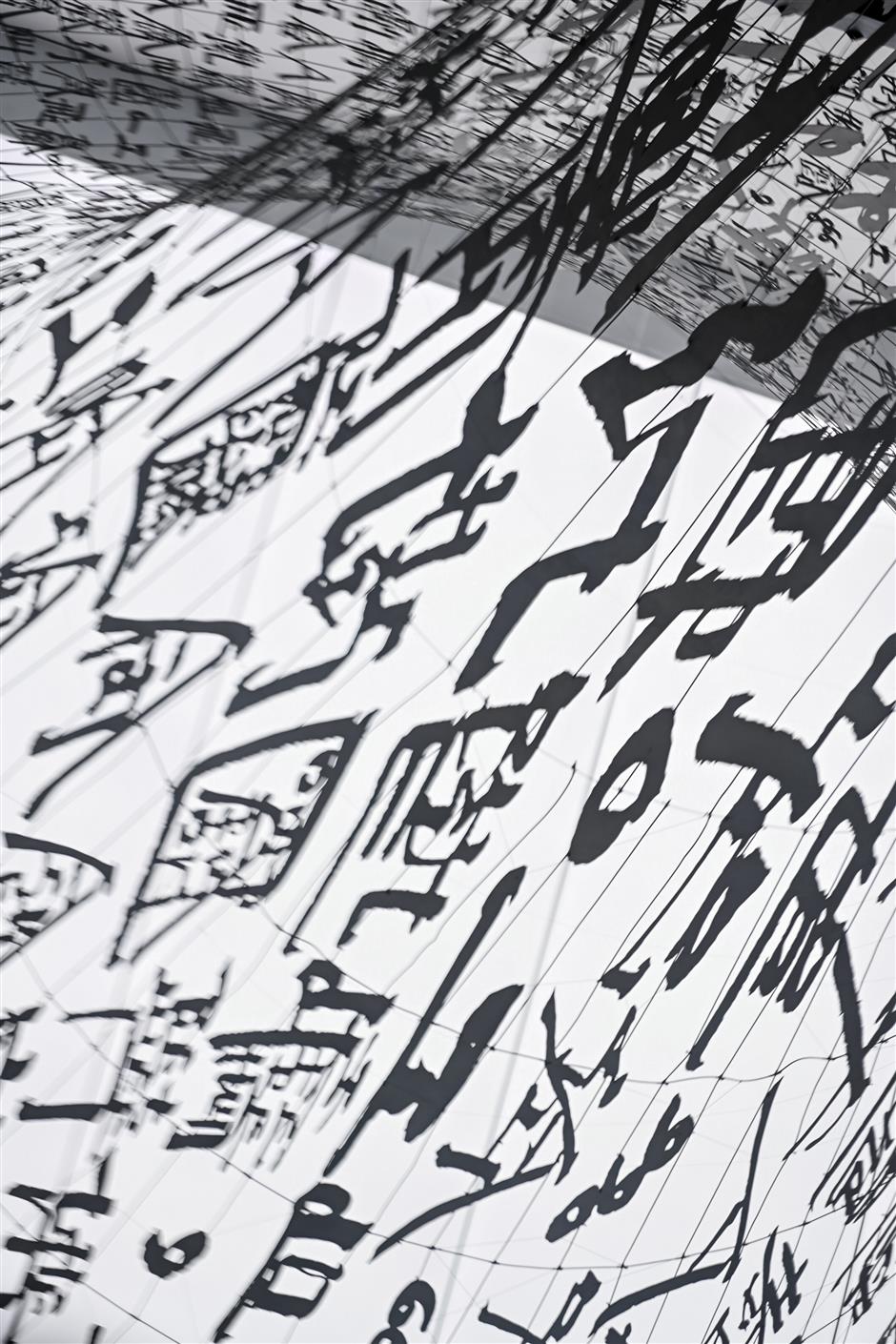Capturing the tension, interaction and relationship among different civilizations

On-site scene
Commissioned work is usually a double-edged sword for an artist.
An outstanding piece could be a boon to strengthen the artist's status in the art community, while a mediocre work could become a "scar" on his heart.
Artist Xu Bing's "Gravitational Arena," recently installed in Museum of Art Pudong's (MAP) Exhibition Hall X, belongs to the former.
In fact, the same space was used to showcase a commissioned work created by Cai Guoqiang, a world-renowned Chinese firecracker artist.
Further, Xu's installation goes far beyond people's expectations, whether in form or content.
Stepping into the exhibition space, visitors will be astonished at the size of this giant work.
A colossal vortex of characters is formed in the hall, stretching down to the ground from more than 30 meters above. Apart from the tensions and contortions caused by gravity, the characters are reflected by a big mirror on the floor, creating a mutually penetrating sensation of depth between the artwork and the space.
Produced by the Lujiazui Group and organized by MAP, the work is composed of 1,600 metal "Square Word Calligraphy" characters. It took nearly a month to install into a space where visitors can look through windows to different floors.
The new work is also part of Xu's solo exhibition, currently underway at MAP through November 13.
For those unfamiliar with Xu and his previous works, it's a good idea to do some research online before visiting or read the exhibition's pamphlet carefully as well as the text on the walls inside the space. "Square Word Calligraphy" is one of Xu's most renowned series.
For "Square Word Calligraphy," the artist designed a calligraphic system in which English words come to resemble Chinese characters. Like a linguistic breeder, he combines Chinese calligraphy with English writing to create a new composite that contains real meanings.
"Square Word Calligraphy" is an excerpt from Ludwig Wittgenstein's "Philosophical Investigations." From the perspective of linguistic philosophy, Wittgenstein points out a misunderstanding in human cognition resulting from language use. Inspired by this, Xu thinks "that like all languages, perspective' serves as an intermediary between our mental thoughts and the external world. Various languages unwittingly shape the way we are thinking, the same as any language, so our thinking must have some blind spots."
Born in Chongqing in 1955, Xu is one of the first contemporary Chinese artists who received overseas recognition, which continues to this day. He is widely acclaimed as one of the leading conceptual artists working with language and semiotics (the study of signs and symbols and their use or interpretation). Xu's works have been shown at many well-known art museums around the world, including the National Art Museum of China, New York's Museum of Modern Art and Metropolitan Museum of Art, and London's British Museum and Victoria and Albert Museum.
The title of the work – "Gravitational Arena" – also embodies diverse layers of profound meanings for the artist.
"The shape and mirror reflection of the work resemble the 'wormhole model,' while 'arena' reveals the theatrical experience when viewed from various perspectives on different floors," Xu said. "Through modelling the entanglement between matter in the universe, I hope this piece evokes the viewer's thinking on the tensions, interactions and wrestling-like relationships among different civilizations."
Exhibition Info
Dates: Through November 13, 10am-9pm
Venue: Museum of Art Pudong
Address: 2777 Binjiang Ave, Pudong New Area

Detail of the characters
















